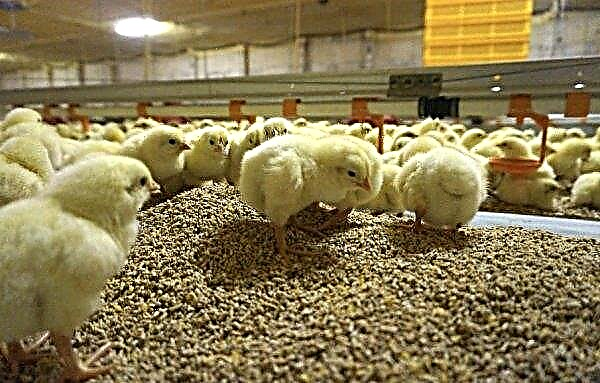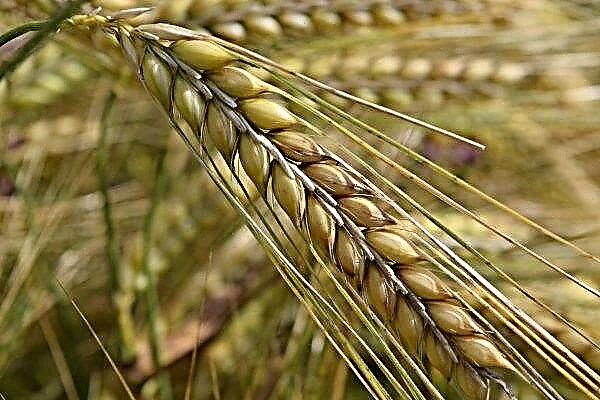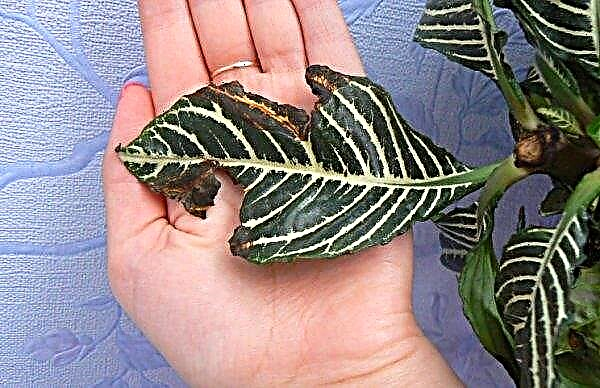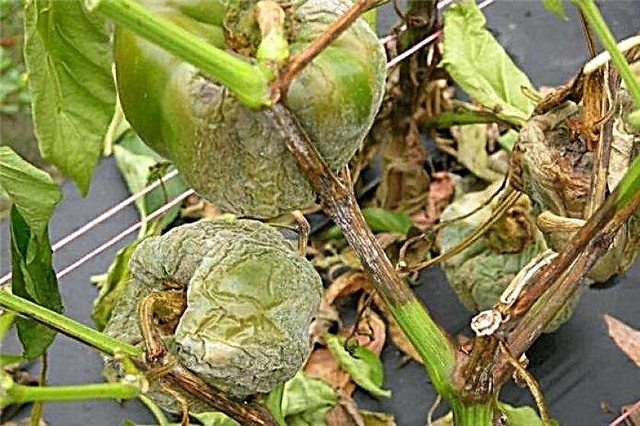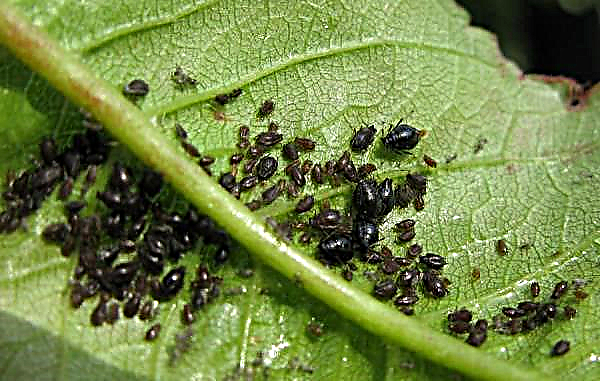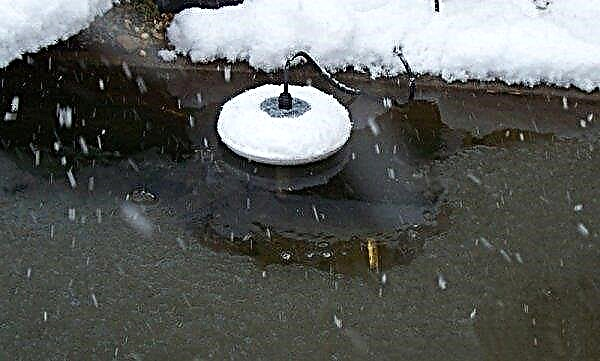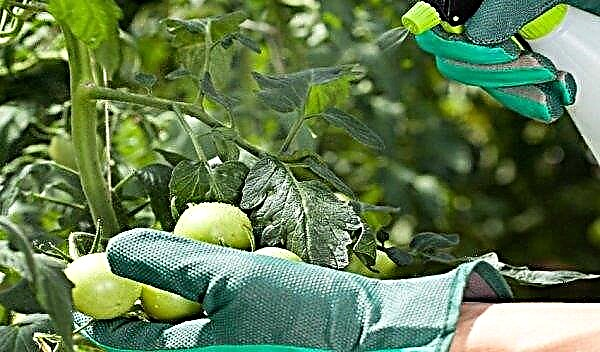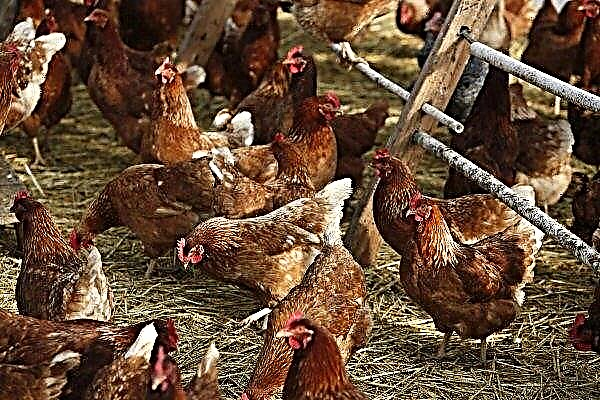Due to the variety of melon varieties, it is difficult for novice gardeners to opt for one. Pineapple F1 is a popular variety that many have come to love due to its unique taste and aroma. We offer you to get acquainted with the characteristics of this melon, as well as with the correct technique for its cultivation.
History of origin and description of the variety
Pineapple F1 is often mistaken for a mini-grade Pineapple Americano. Such confusion is often found in the literature. Despite similar names, these are two completely different varieties.
Selection
Melon Pineapple F1 - a hybrid of Dutch breeding, created by breeders in the 90s. XX century.

Fetal characteristic
The fruit of the melon of this species is slightly oblong. The peel is thin, but dense, yellow-orange color, covered with a chaotic, slightly convex mesh. The weight of one ripe melon varies from 1.2 to 2.5 kg. The subcutaneous part is light yellow or orange, closer to the skin is greenish. The structure of the pulp is tender and juicy, slightly oily.
Pineapple F1 has excellent taste characteristics. The fruit is sweet, “melts” in the mouth, has a light aroma of pineapple.
Did you know? The first mention of melon is found in the Bible (Numbers 11: 5).
Chemical composition
100 g of pineapple melon pulp contains:
- protein - 0.6 g;
- fats - 0.3 g;
- carbohydrates - 7.4 g.
- ascorbic acid - 20 mg;
- vitamin PP - 0.4 mg;
- beta-carotene - 0.4 mg;
- thiamine - 0.04 mg;
- riboflavin - 0.04 mg;
- vitamin B5 - 0.2 mg;
- pyridoxine - 0.06 mg;
- tocopherol - 0.1 mg;
- folic acid - 6 mcg.
The fetus is useful for the human body - recommended for anemia, anemia, chronic ailments of the digestive tract, upper respiratory tract, tuberculosis, gout, rheumatism, heart and blood vessel problems.

Advantages and disadvantages
- The value of melon crossed with pineapple lies in the following characteristics:
- Peerless presentation;
- great taste;
- precocity;
- resistance to pests and diseases, often affecting the culture, especially to anthracnose.
Cultivation methods
In southern areas, the seeds of the variety are planted in open ground. In countries with cooler climates, it is better to use a greenhouse or practice seedlings.
The timing
In open ground, seeds are planted around the end of May. You can navigate by the temperature of the soil. It should warm up to + 15 ° C, otherwise the seeds will not sprout.
Important! If you plan to grow through seedlings, plant young plants in unprotected soil only after the threat of frost has completely passed.
Seat selection and crop rotation
Ideally, if the soil on the site is light, sandy. Otherwise, it must be fertilized in advance with humus or mullein.
Melon is a heat-loving culture, so choose a well-sheltered place to plant it. Suitable area illuminated by direct sunlight throughout the day.
The best predecessors for pineapple melon:
- onion;
- turnip;
- radish;
- cabbage;
- beet;
- legumes;
- corn;
- perennial greens (except parsley).
The plant will receive the minimum amount of nutrition after cucumber and pumpkin.

Sowing pattern and depth
Before sowing, the seeds are soaked for several days in warm water. In doing so, do not forget to change the water daily. As soon as the seeds begin to germinate, you can begin sowing work. You can soak the seed for 12 hours in a warm solution of fungicide and growth stimulant, and then rinse and dry.
Sow the prepared seeds according to the scheme 140 × 50 cm, in the greenhouse - 70 × 40 cm, based on 3-4 pieces. into the hole. Do not dig too deep: 1.5–2 cm is enough. The sowing depth is 4–5 cm. In all cases, sowing is recommended to cover the garden bed with a film - this will accelerate germination.
The first shoots will appear a week after sowing, and after 10 days you can remove the film cover.
Did you know? 25% of the world's melons are from China. China produces 8 million tons of melons annually.
How to care in the open ground?
What the final result will be depends on competently conducted care of plantings and adult plants.
Watering
Melon requires periodic moderate watering. Pour 0.5 l of water daily under each bush, as the growth grow, bring the volume to 3 l. As soon as flowering begins, reduce the frequency to once every 3-5 days. Make sure that the water does not stagnate, otherwise there will be a threat of fungal and other infections, as well as a general weakening of the plant.
10-15 days before harvesting, it is necessary to completely stop watering.
Fertilizer
The variety should be fed once a year with a mixture of organics (humus) and minerals. Among the latter, choose complexes with a high content of potassium and calcium. Deposit funds exclusively according to the instructions so as not to overfeed the culture and preserve the root system. Fertilize the crop after rain or planned irrigation.
Soil care
In order to prevent stagnation of water and better supply of oxygen to the roots, loosen the soil on the site. First, carry out the procedure once a week, then less often. With the formation of strong side shoots, proceed to hilling.
Remove weeds at least 5 times during the growing season. Especially there is a need for a start. Then the culture itself will not allow weeds to develop next to itself.
Important! After the appearance of 5-6 leaves, the stems must be pinched. The plant should remain 3-5 fruits. Manipulation will accelerate the process of growth and development of culture.
Harvesting and storage
From seedlings to ripe fruit Pineapple F1 passes 65–70 days. It is possible to determine the ripeness of the fruit by the characteristic sweetish aroma and color change from green to yellow-orange. Melon should be easily separated from the stem.
The fruits of this variety are stored for 1–1.5 months without the use of chemicals that extend the shelf life. Harvest perfectly withstands long-distance transportation.
The variety is eaten fresh or used to make jam, jam, jam. Delicious candied fruits are also obtained from pulp. Sometimes the fruit is dried or dried. When dried, the flesh of a melon is considered an exquisite delicacy.
Thanks to a number of positive properties that you could familiarize yourself with above, pineapple melon is attractive for growing. Her cultivation can be done even by beginners in gardening.


